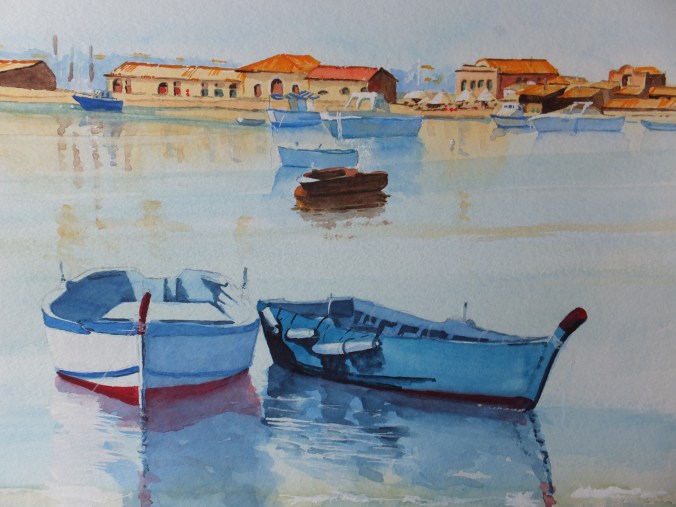
Well, I am moving along slowly, which is the best I can say
There have been quite a few problems over the last couple of weeks, which have demanded my attention. Sadly things that I enjoy, like painting, have had to take second place. Still, every now and then, I creep back to my easel and manage an hour or so. I treat painting as r&r at the moment, and there is no doubt that it soothes the troubled spirit.
I have called this the part finished stage. perhaps more accurate would be to call it the part unfinished stage.
I have put in a Mediterranean sky and water. Phthalo Blue and Cobalt blended seem to work quite well for this. Again I have worked up the distant background in the same colour only deeper, which I think gives it a more faraway look
I have been putting detail into the three mills and adjacent buildings. I have been trying to gradate the tone from one to the other to create the feeling of distance. The nearest will require more work, as this one will have to look really sharp. Detailing the sails will be testing, knowing how much to put in and how much to leave out. I want them to look accurate without looking like a photograph. Oh well, if it were easy it wouldn’t be fun, I suppose
Ironically, the furthest mill presented the least difficulties when it came to painting the sails. Just a flick of a wet brush and that was it. I still have to think about the middle one which will be difficult to get just right. The three bears had the same problem!
I have had to rearrange those low walls to help the composition and to get some reflections in, otherwise there will be nothing in the foreground. No boats here.
Some interesting problems to tackle!





